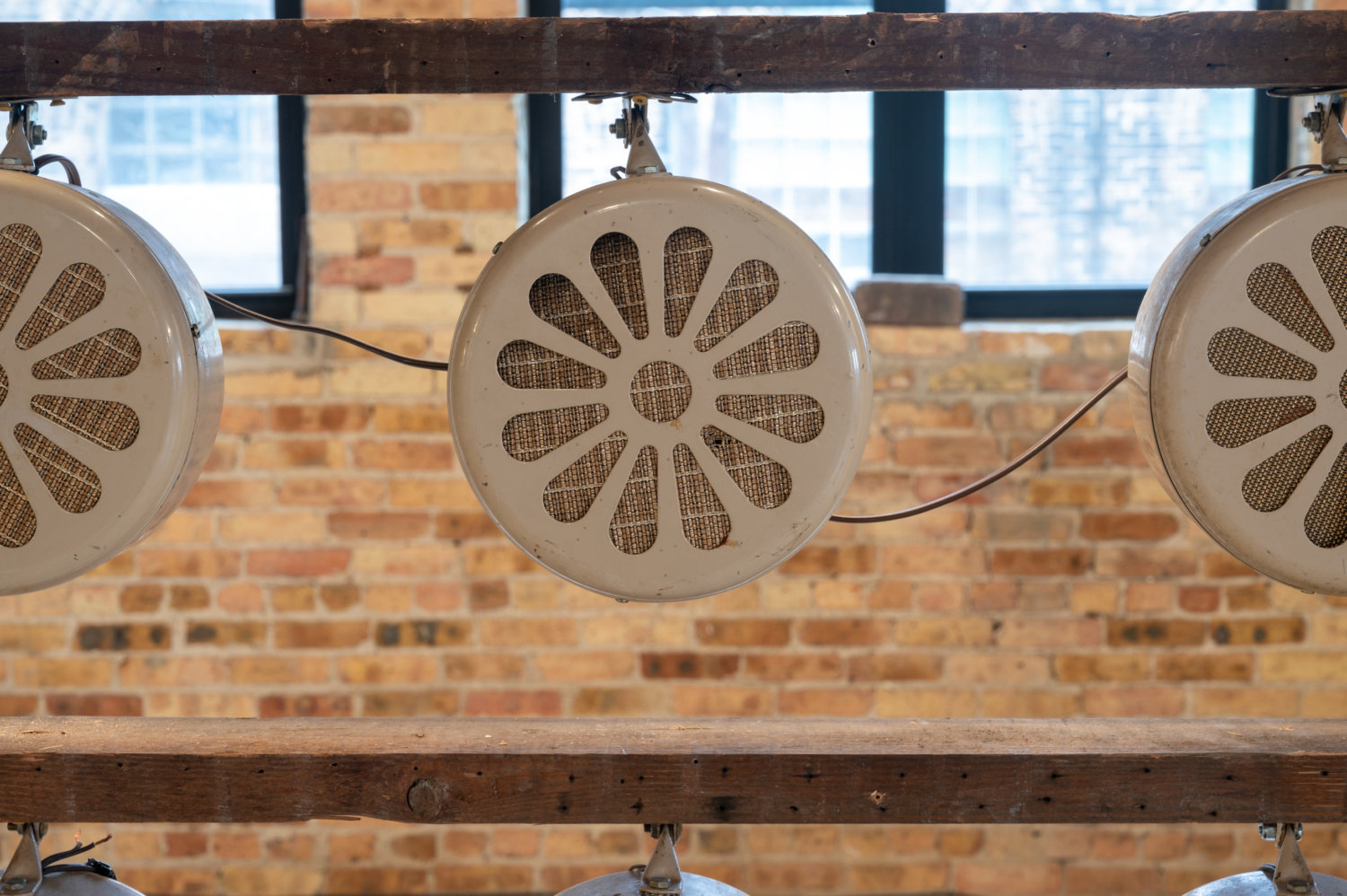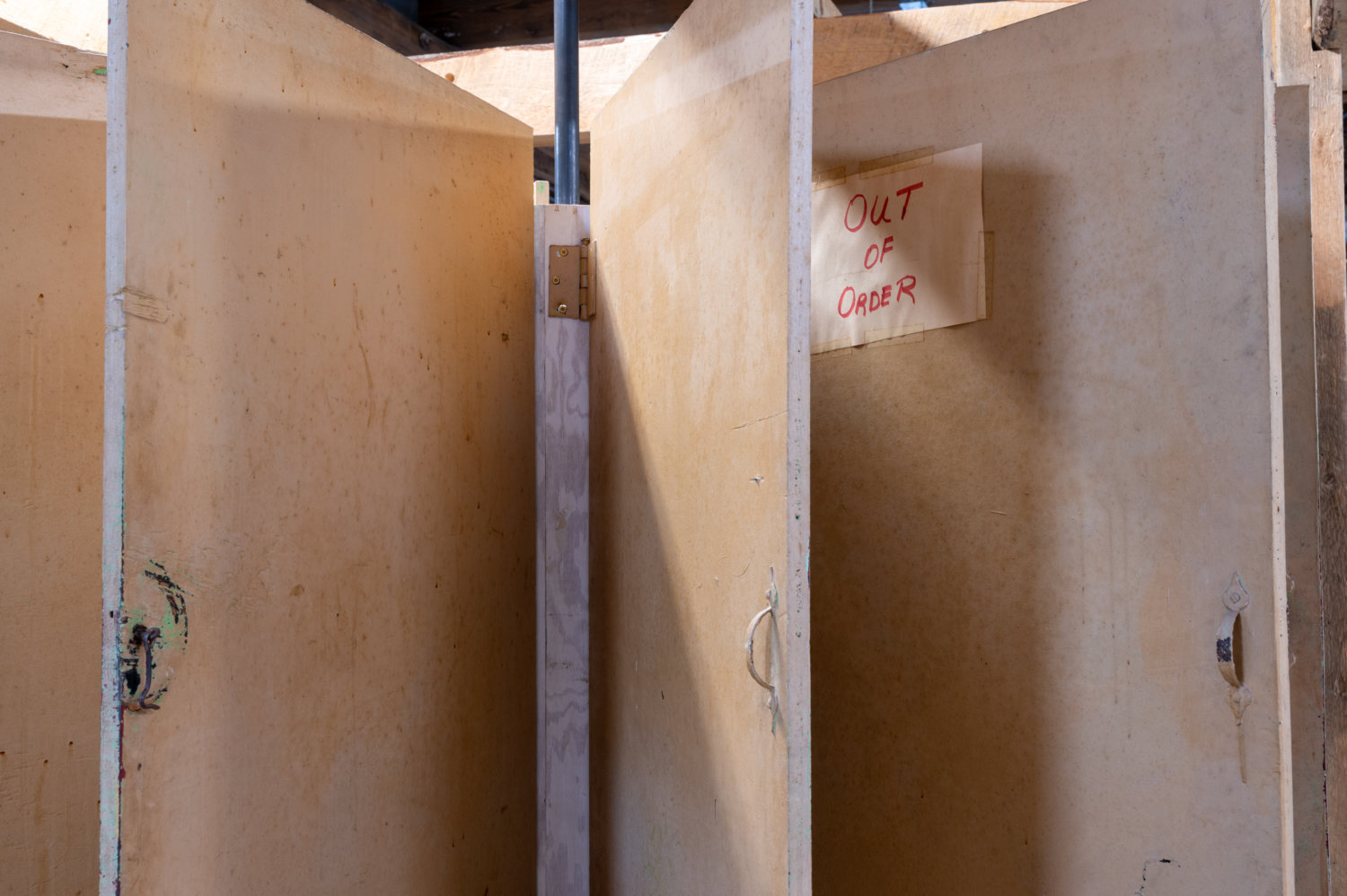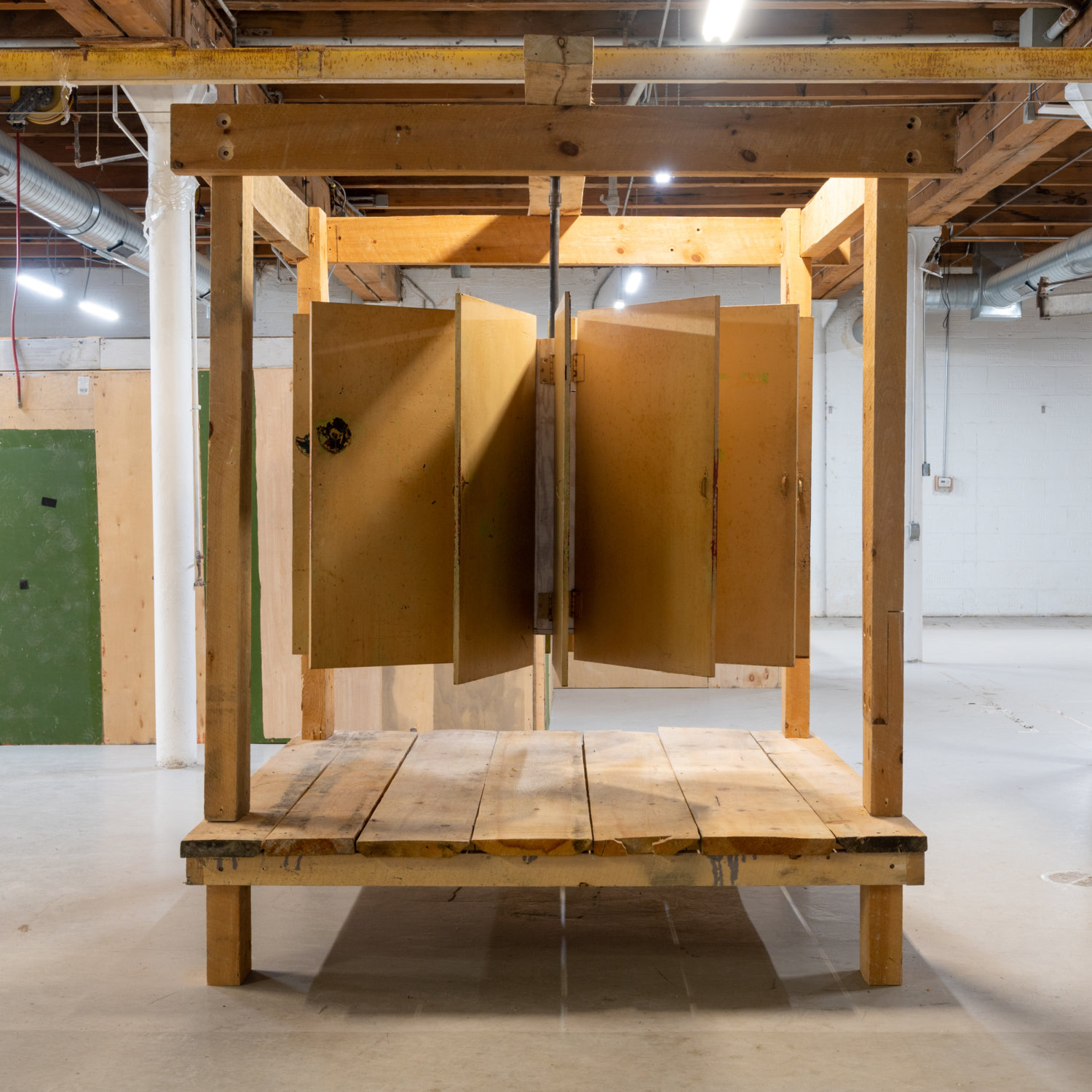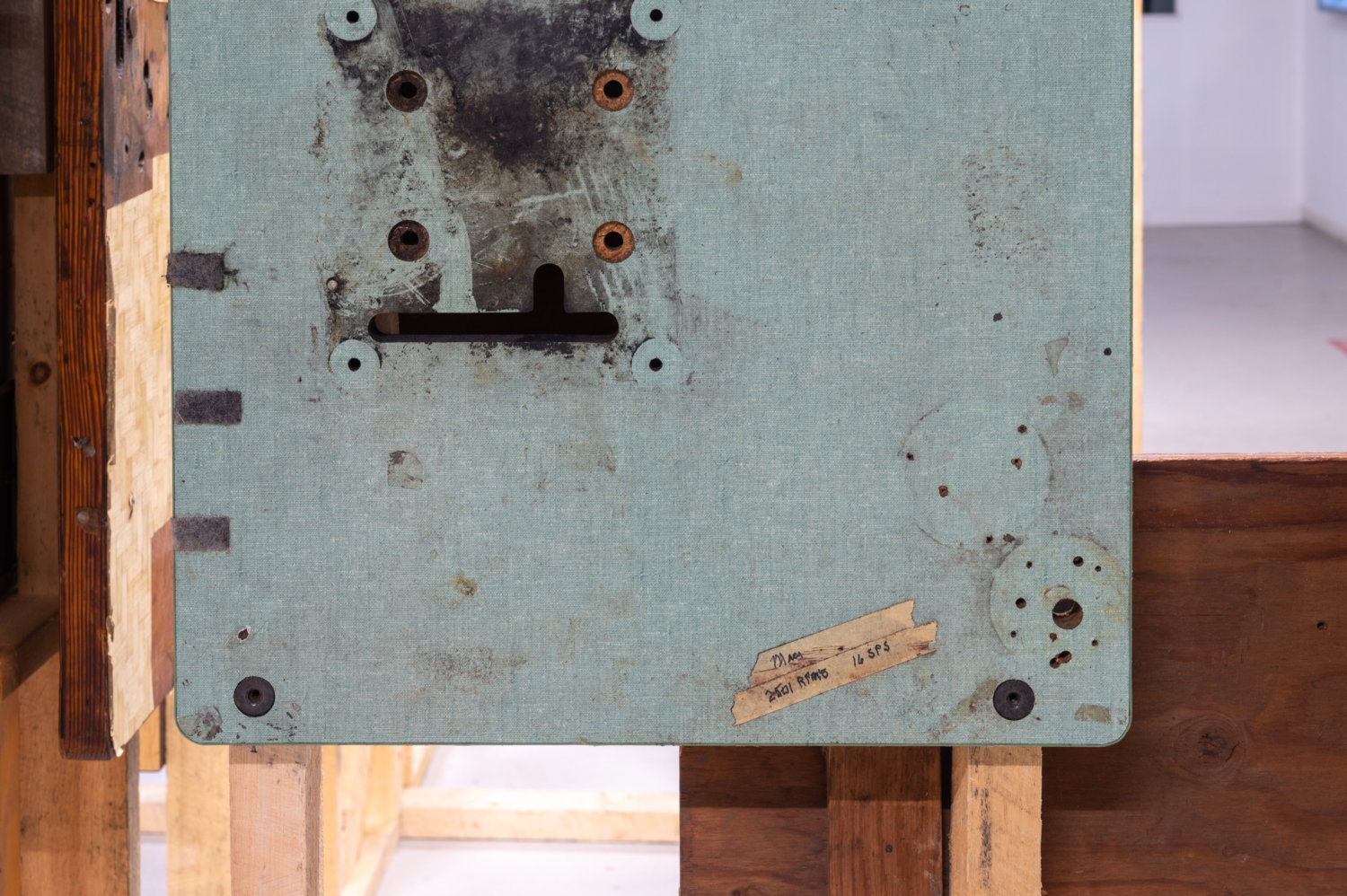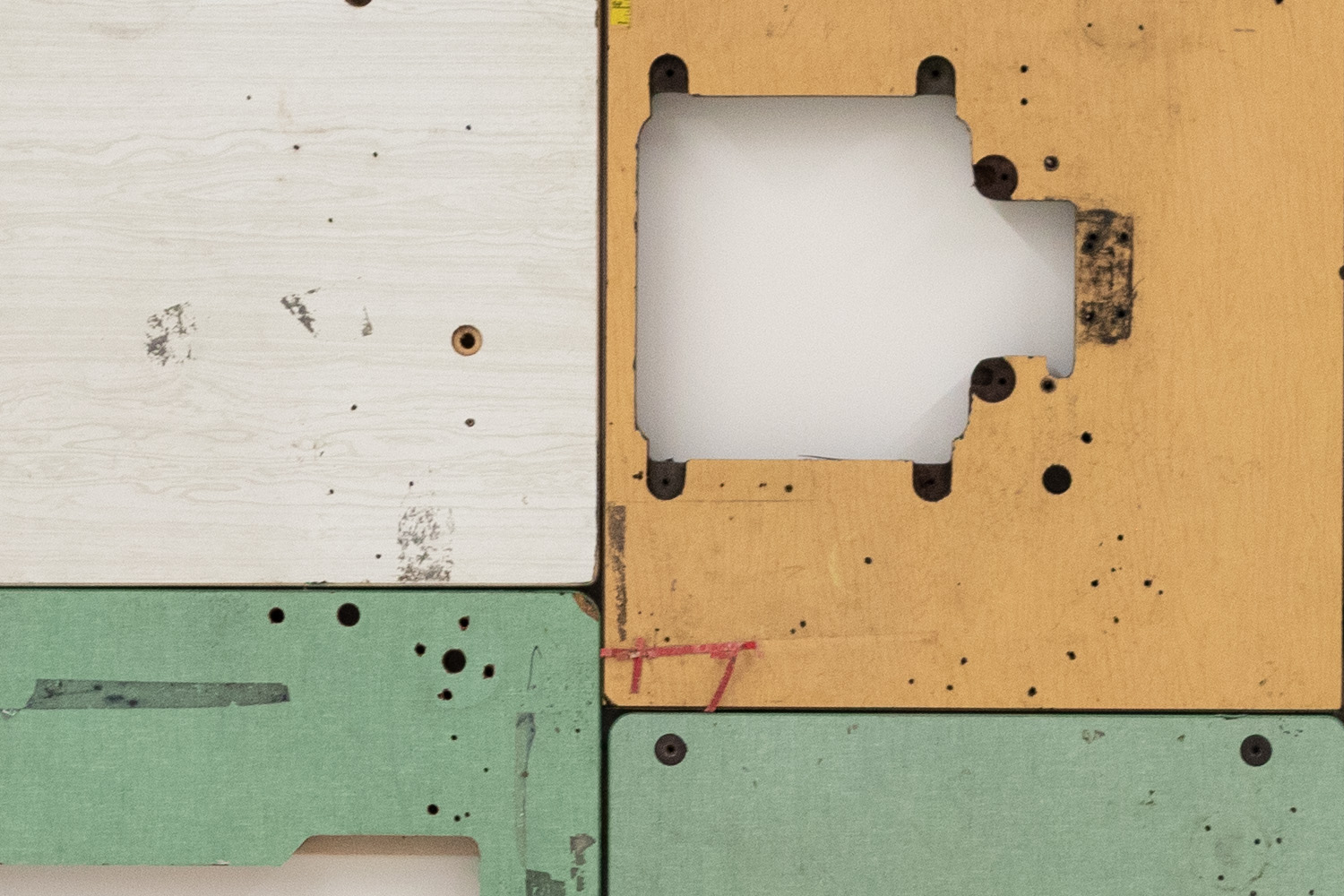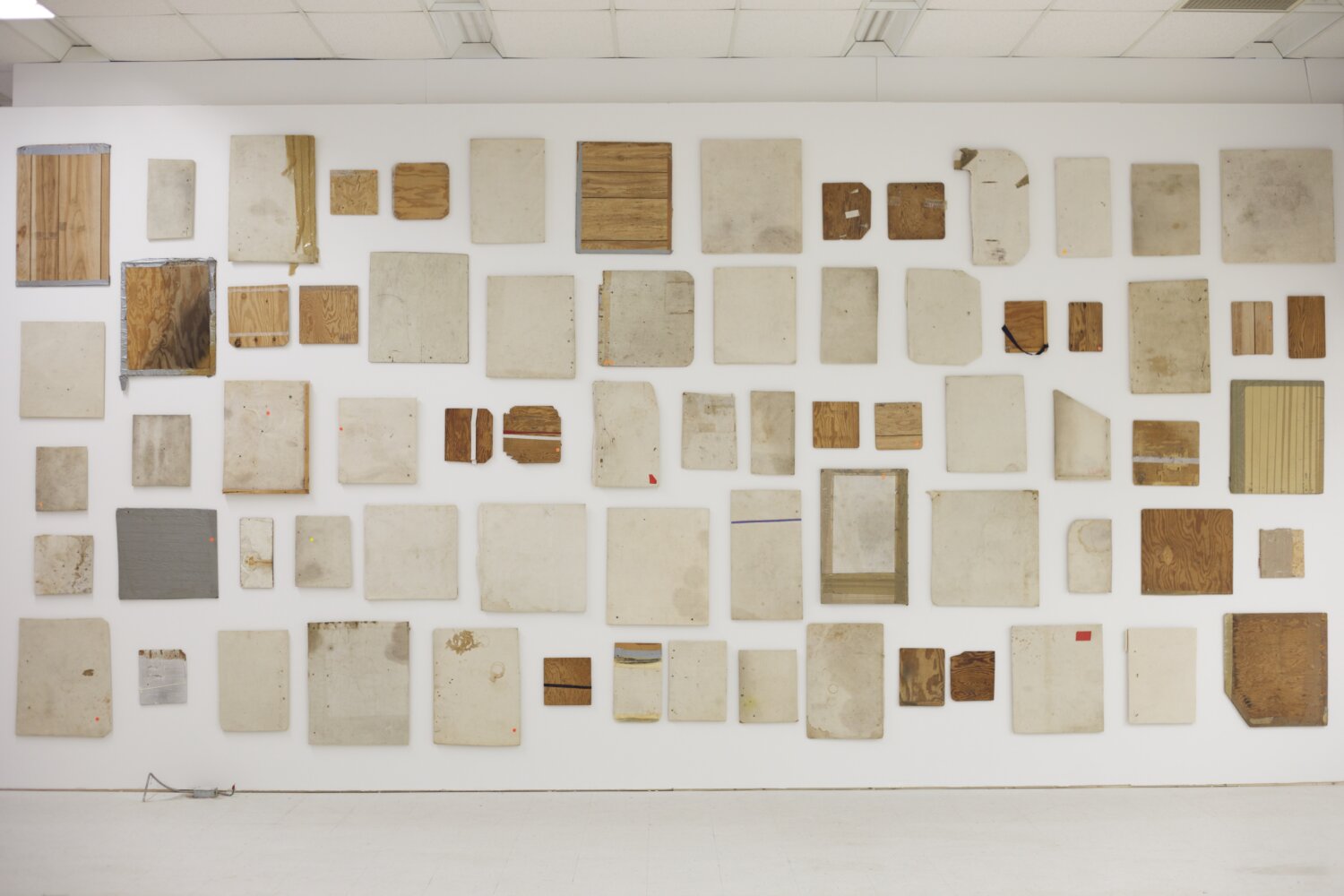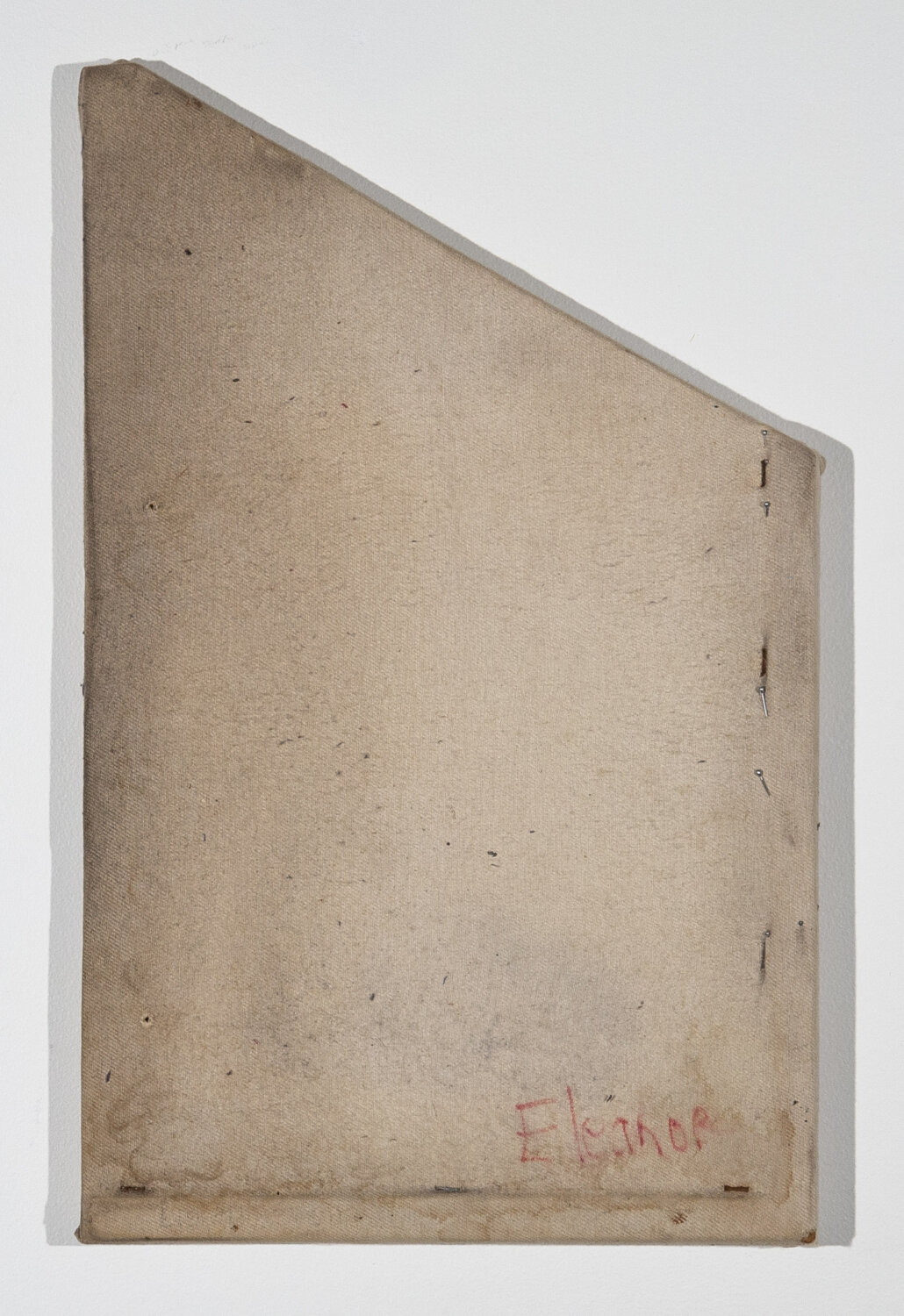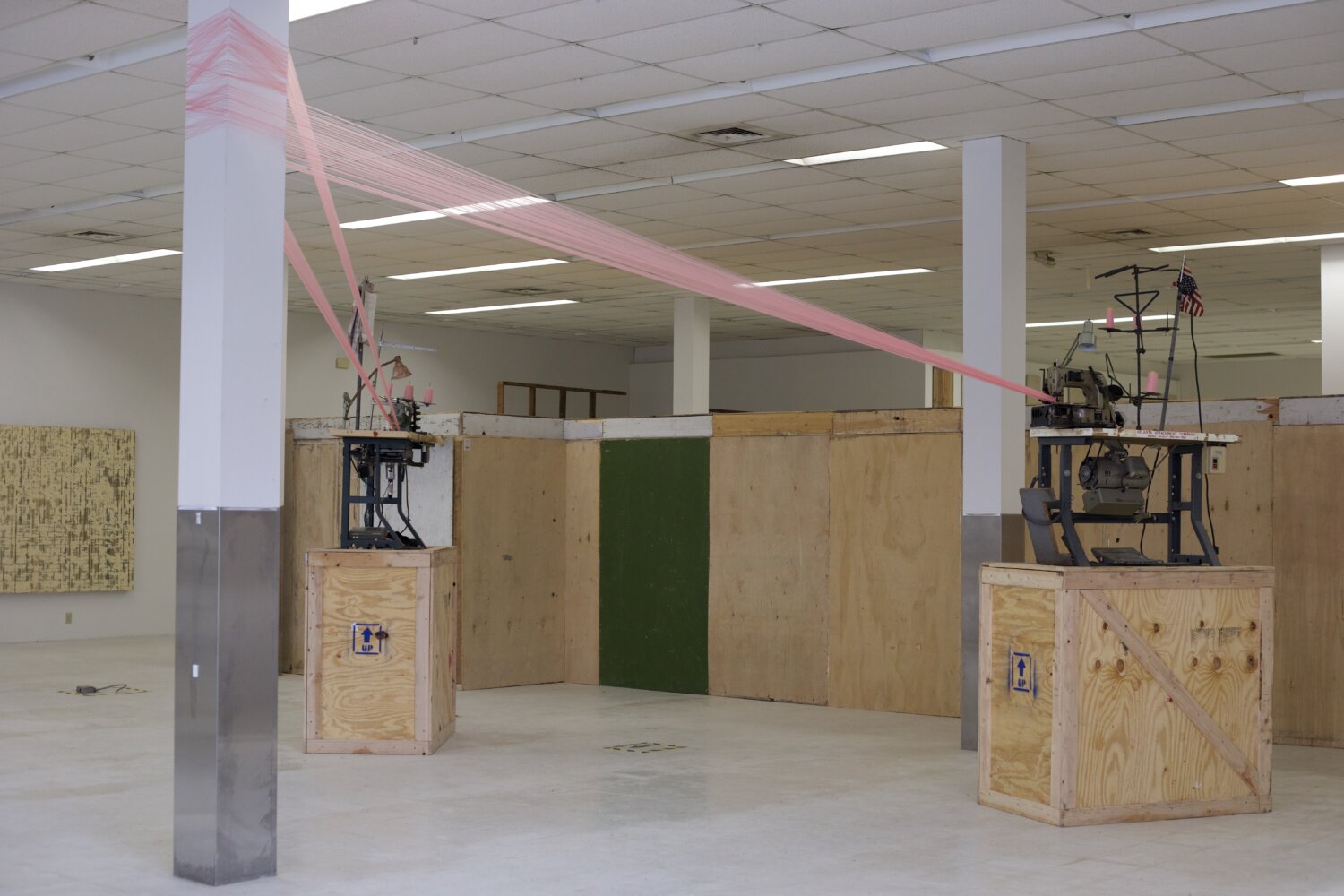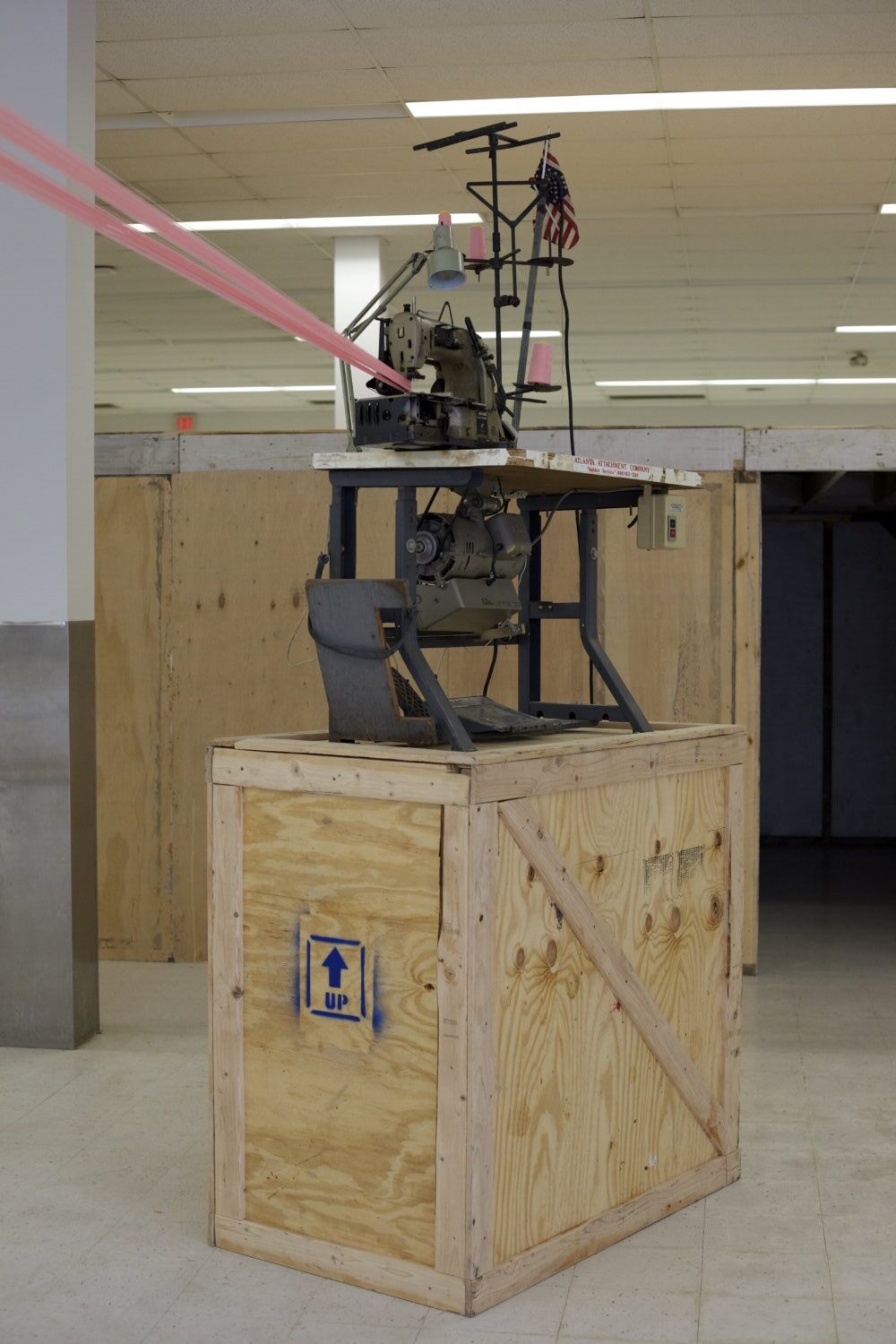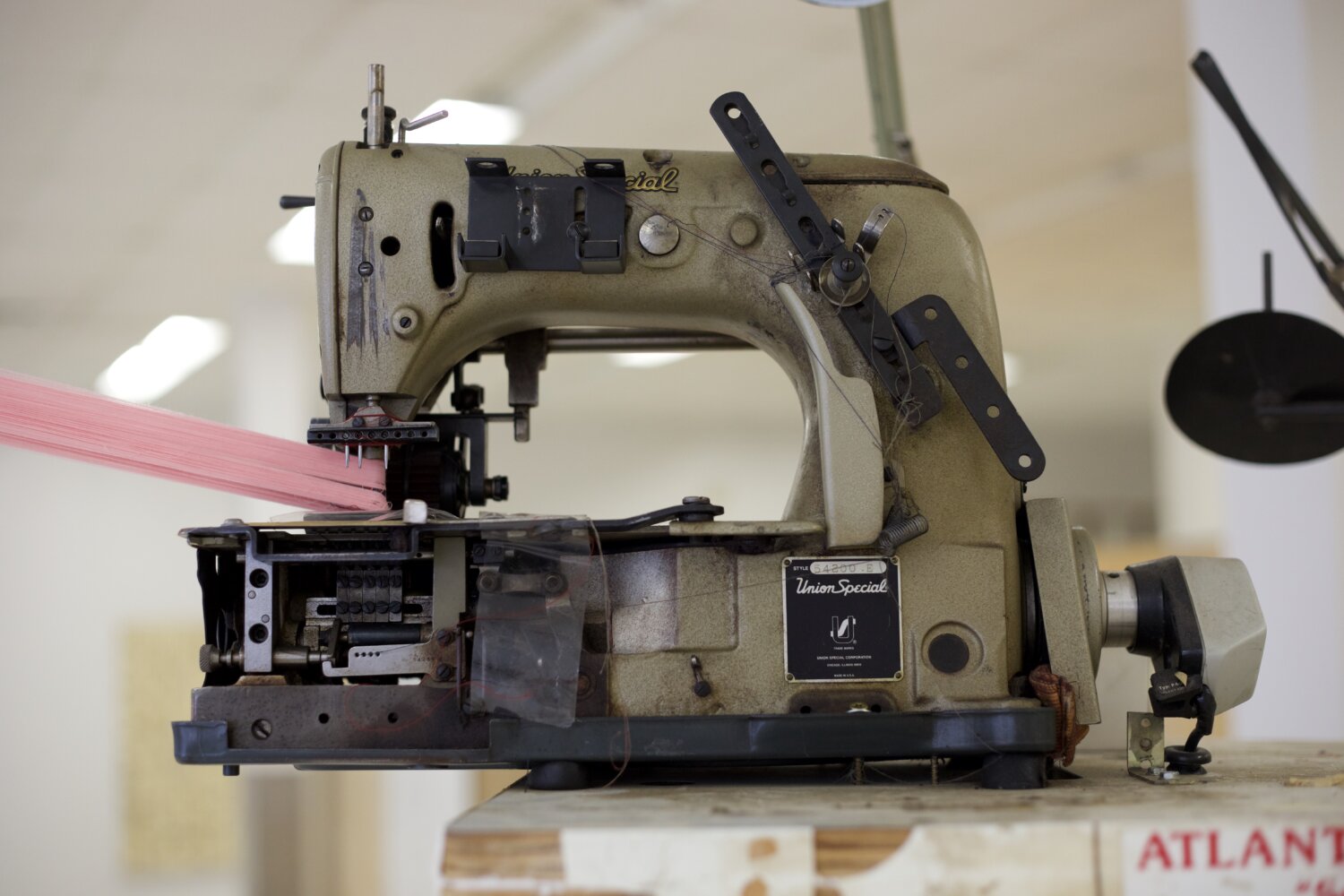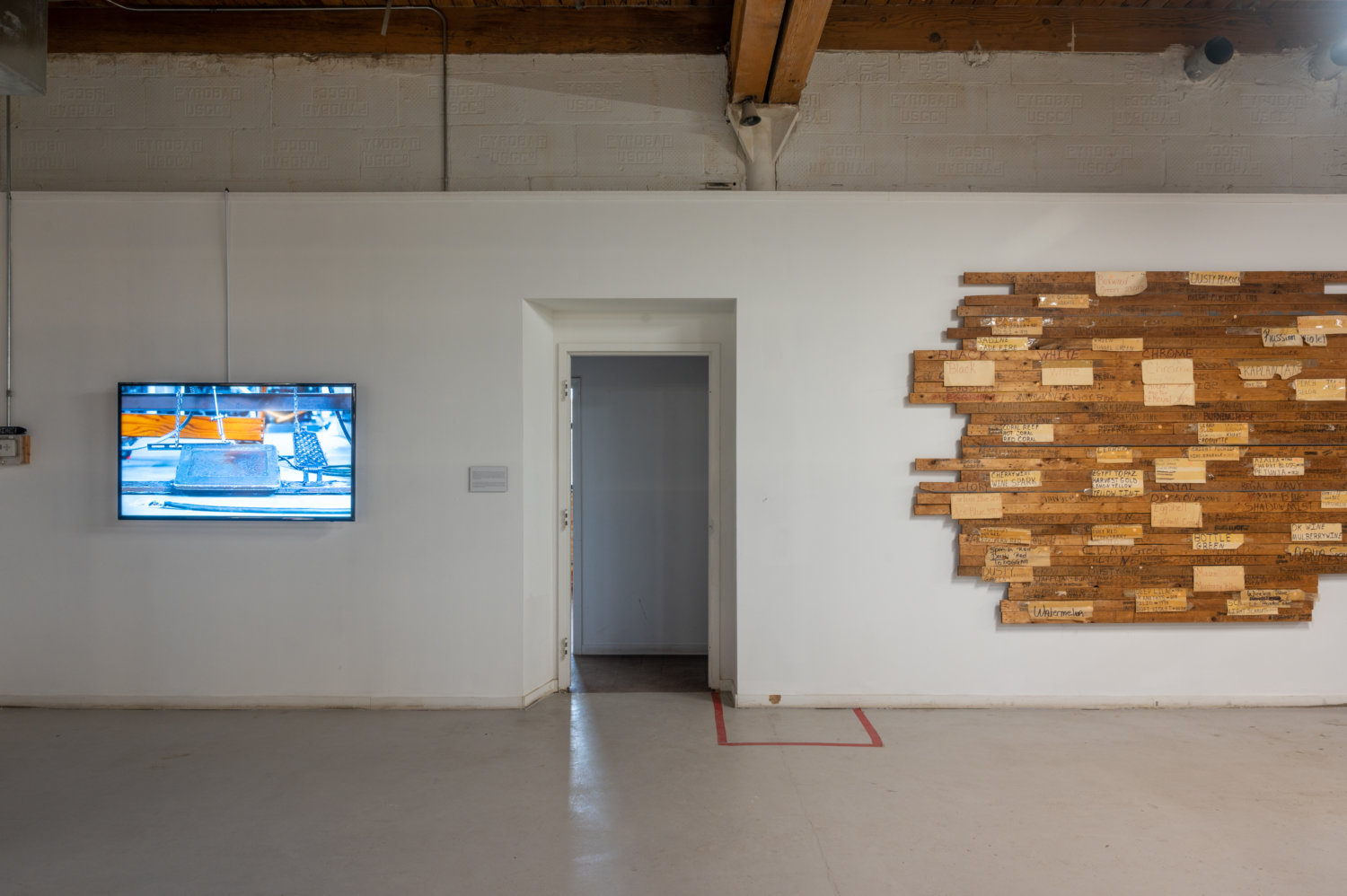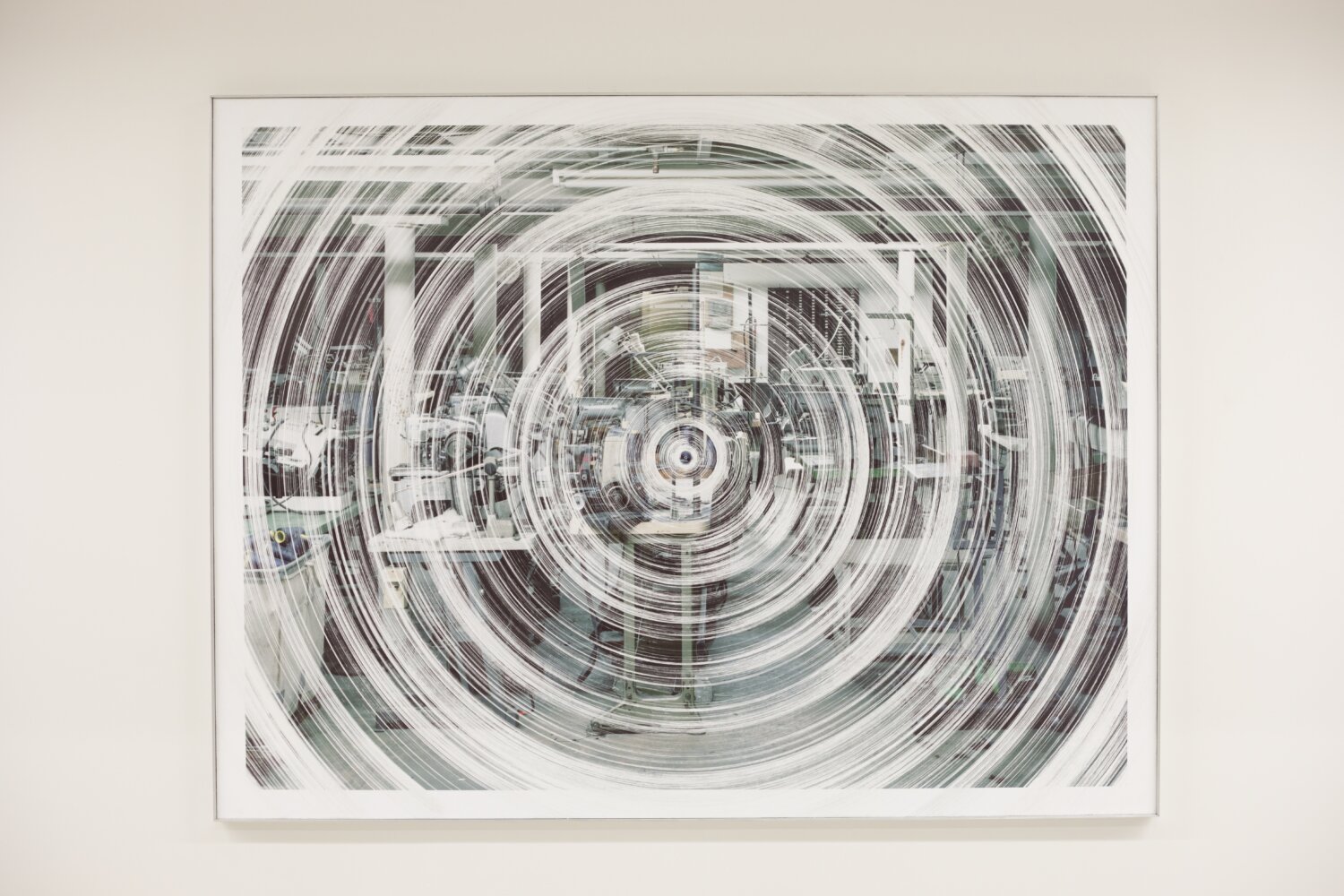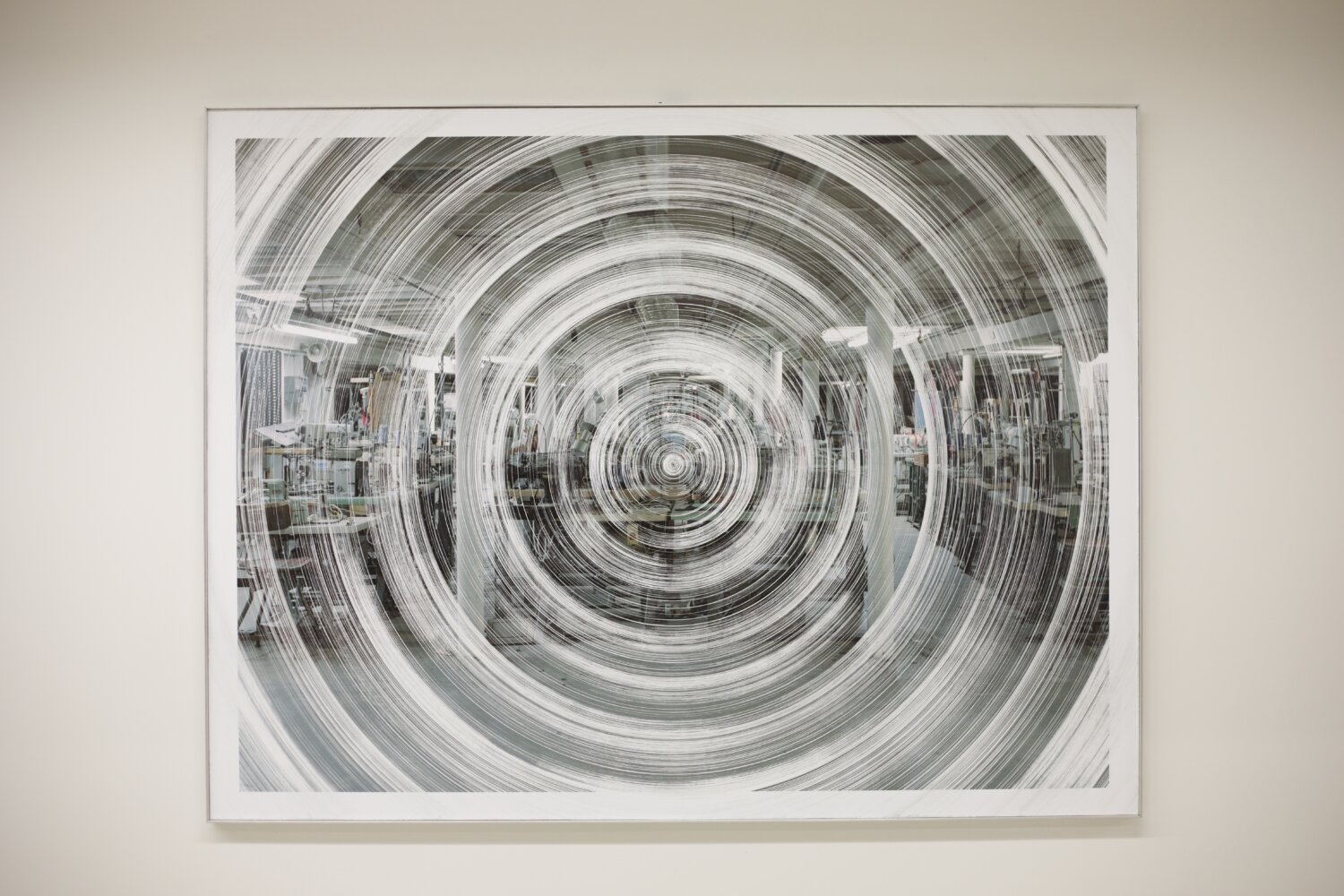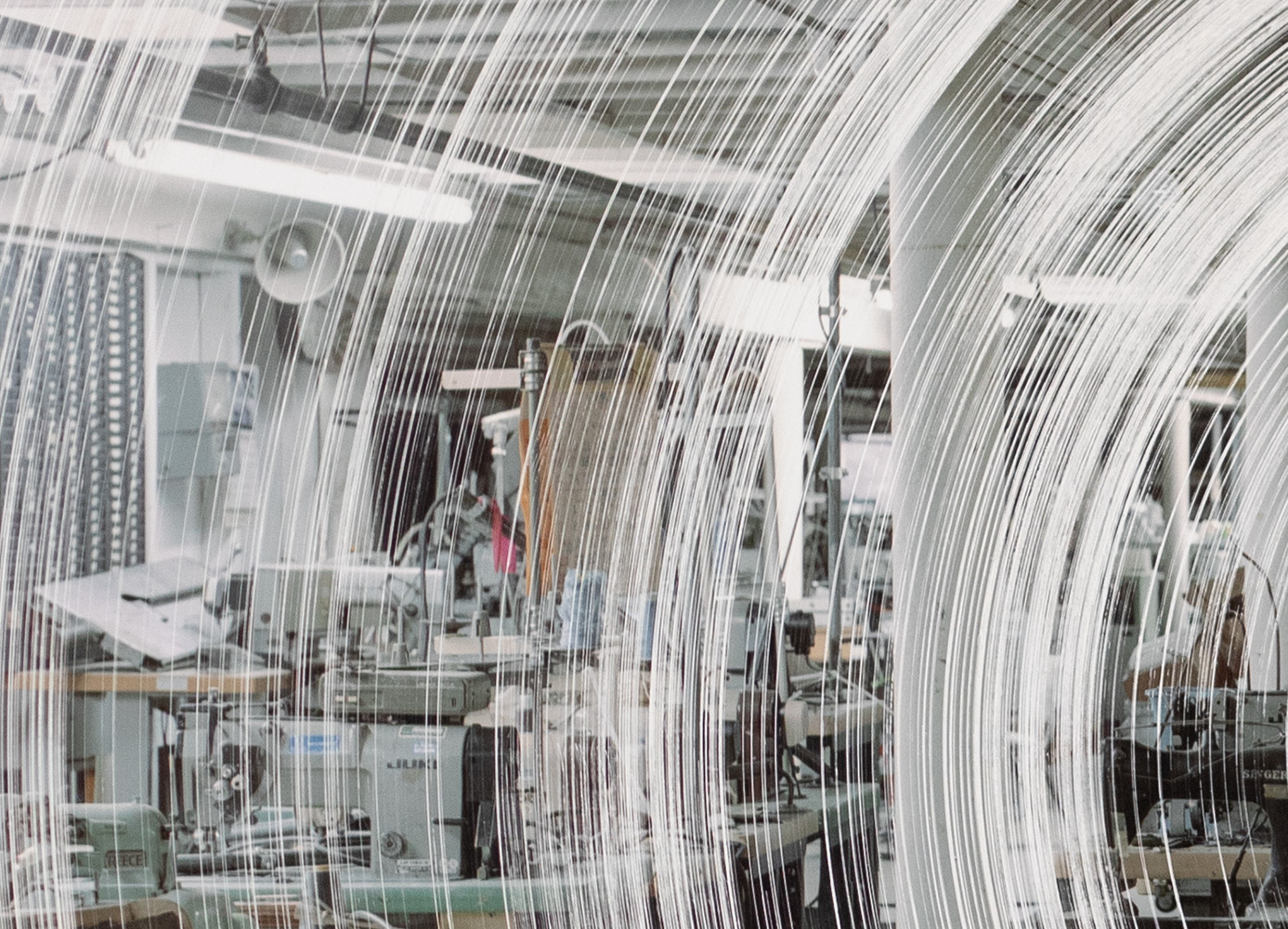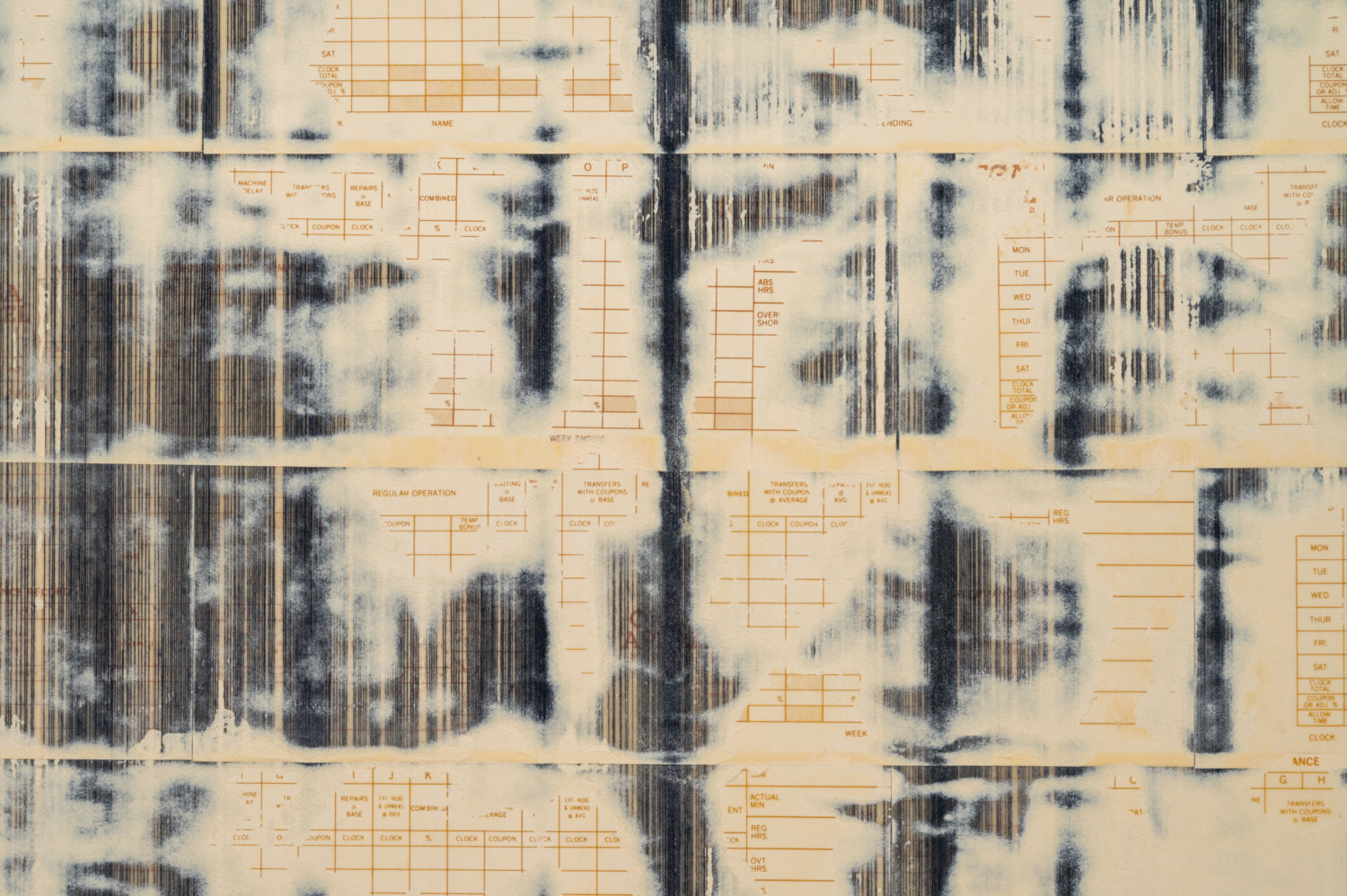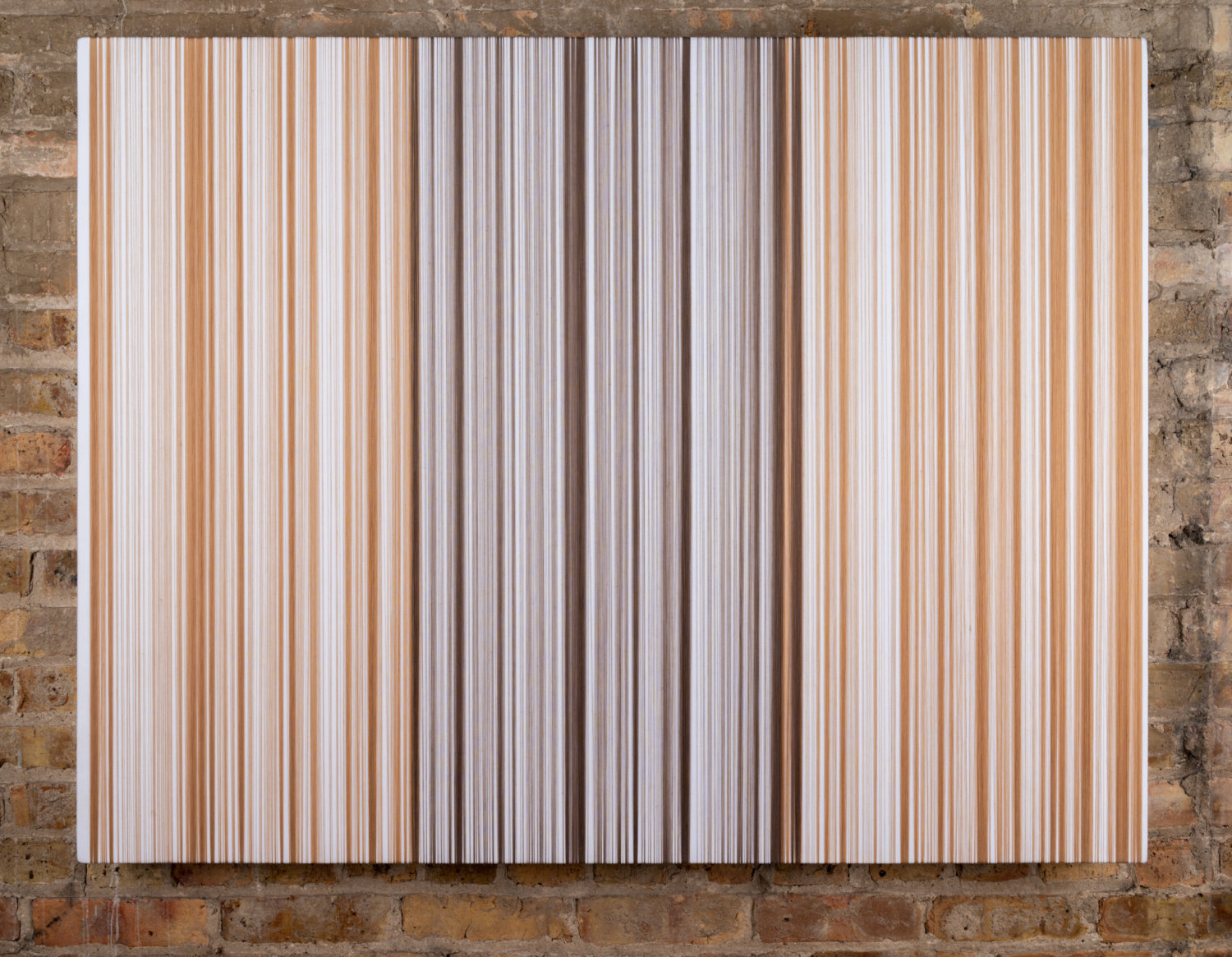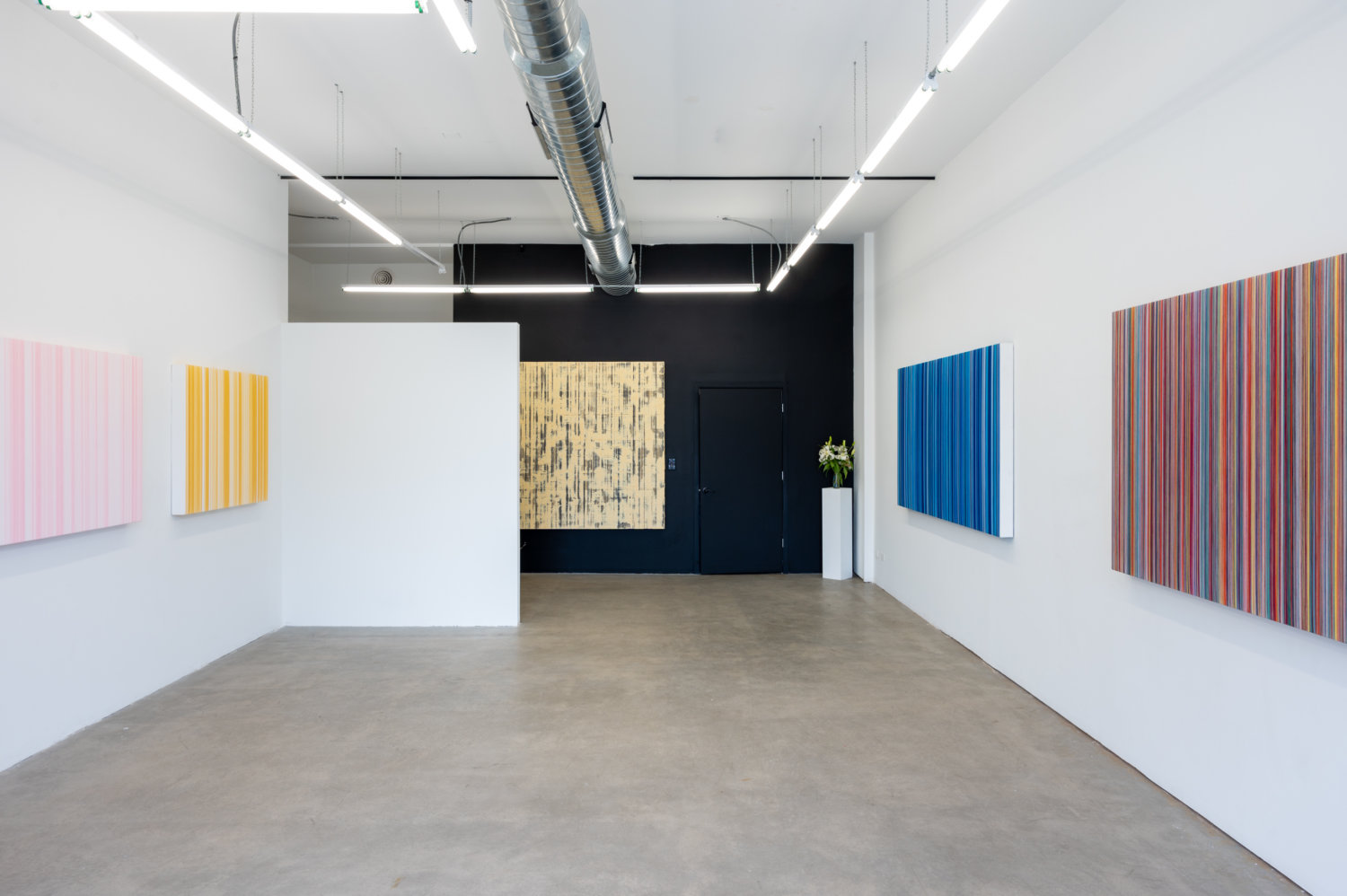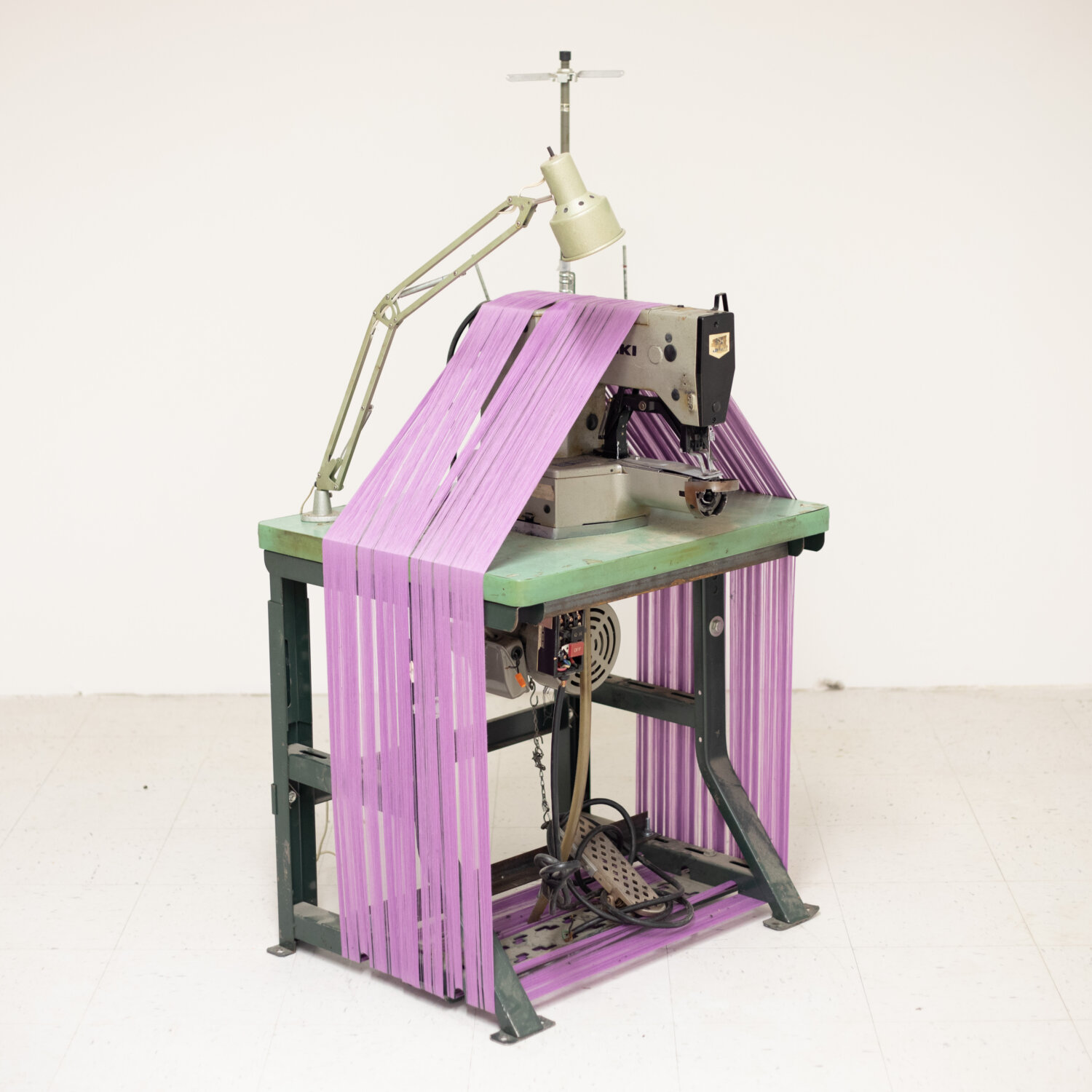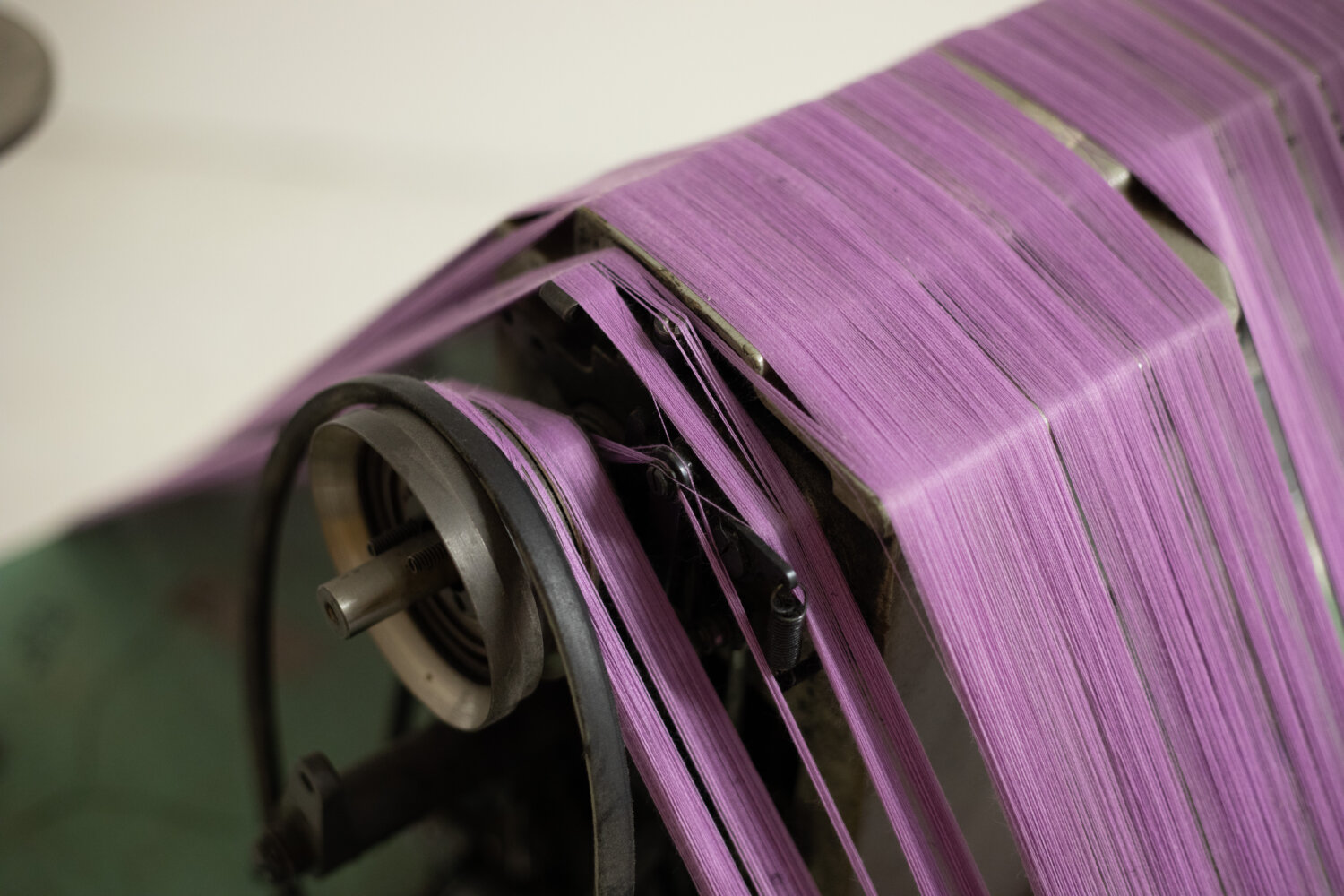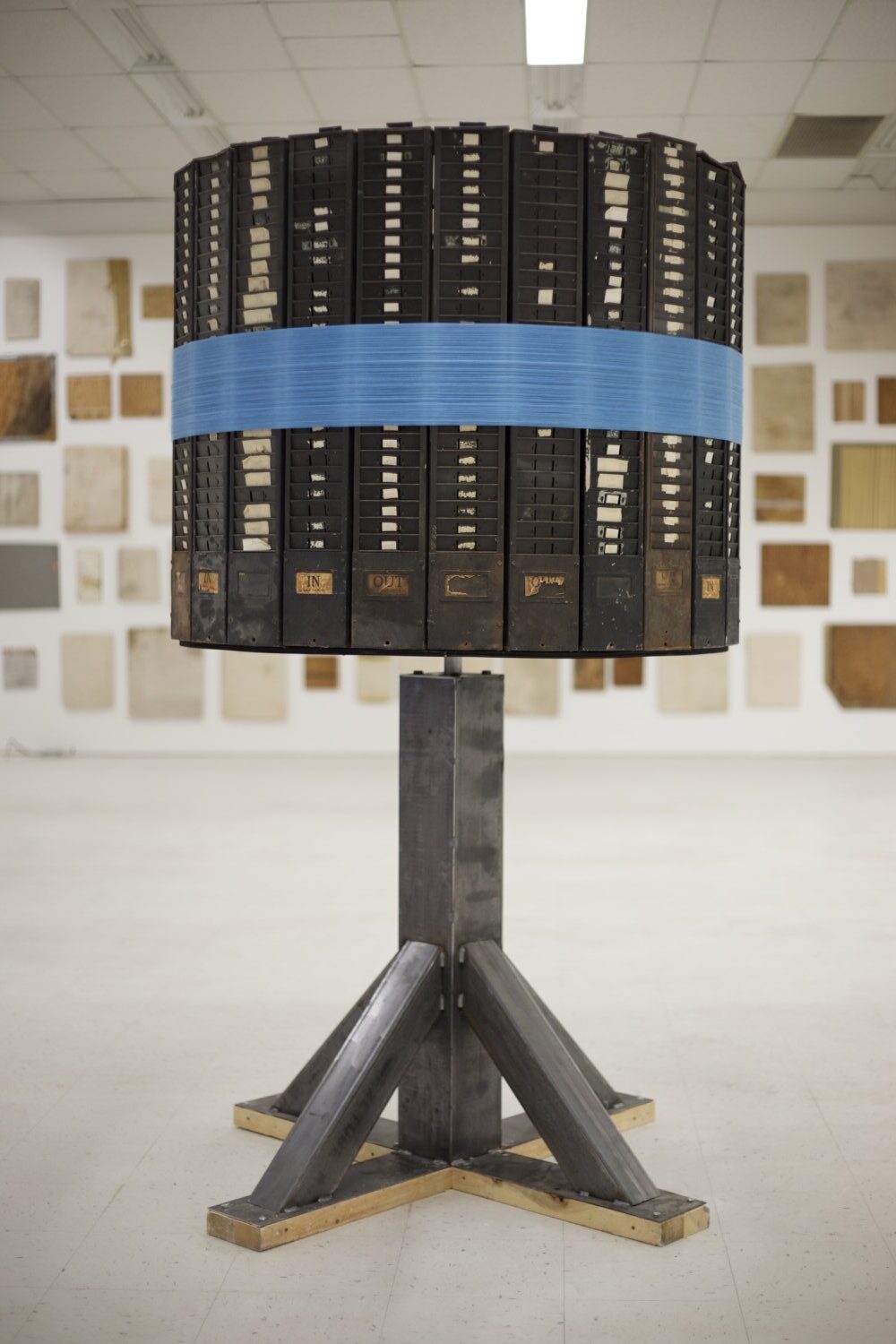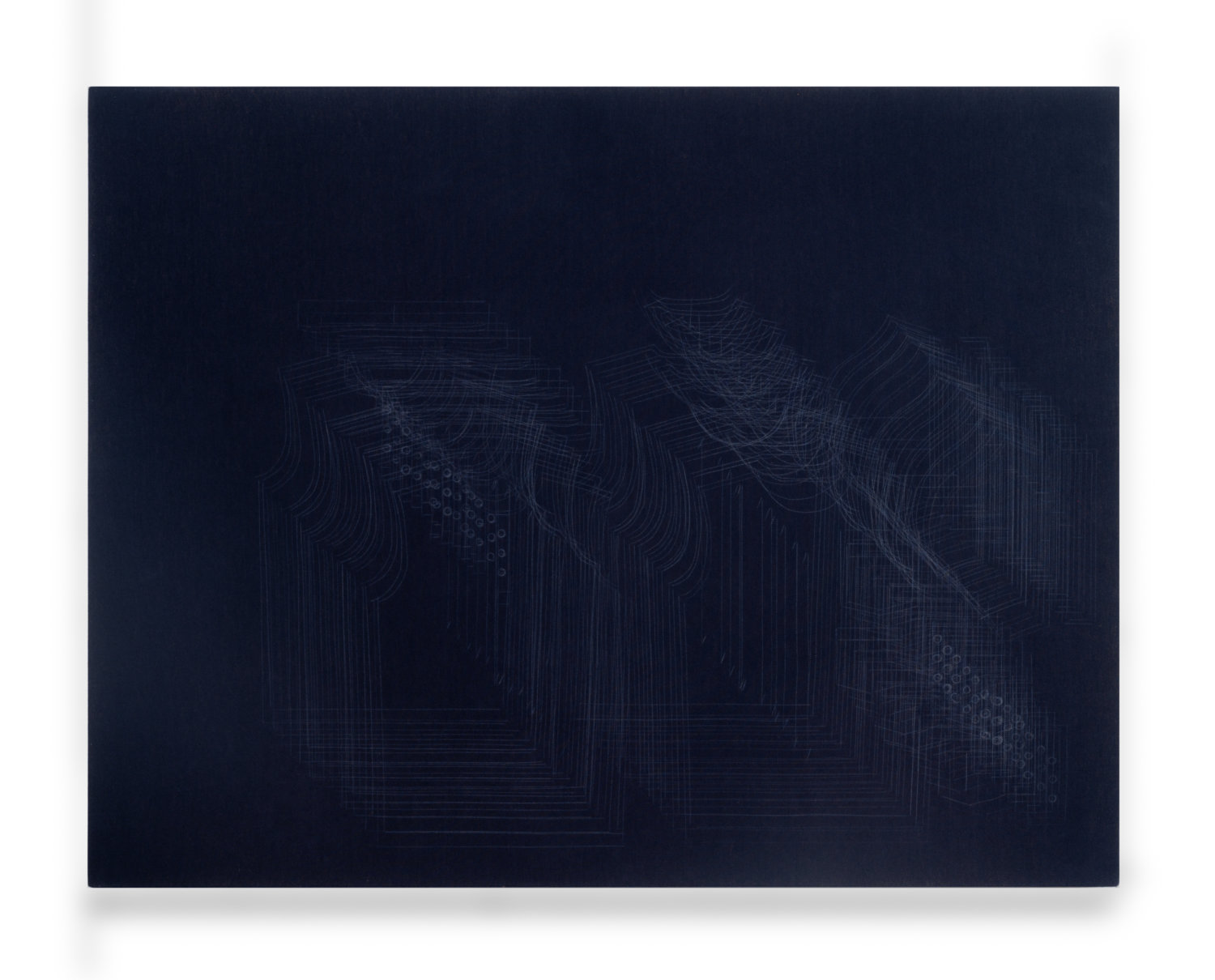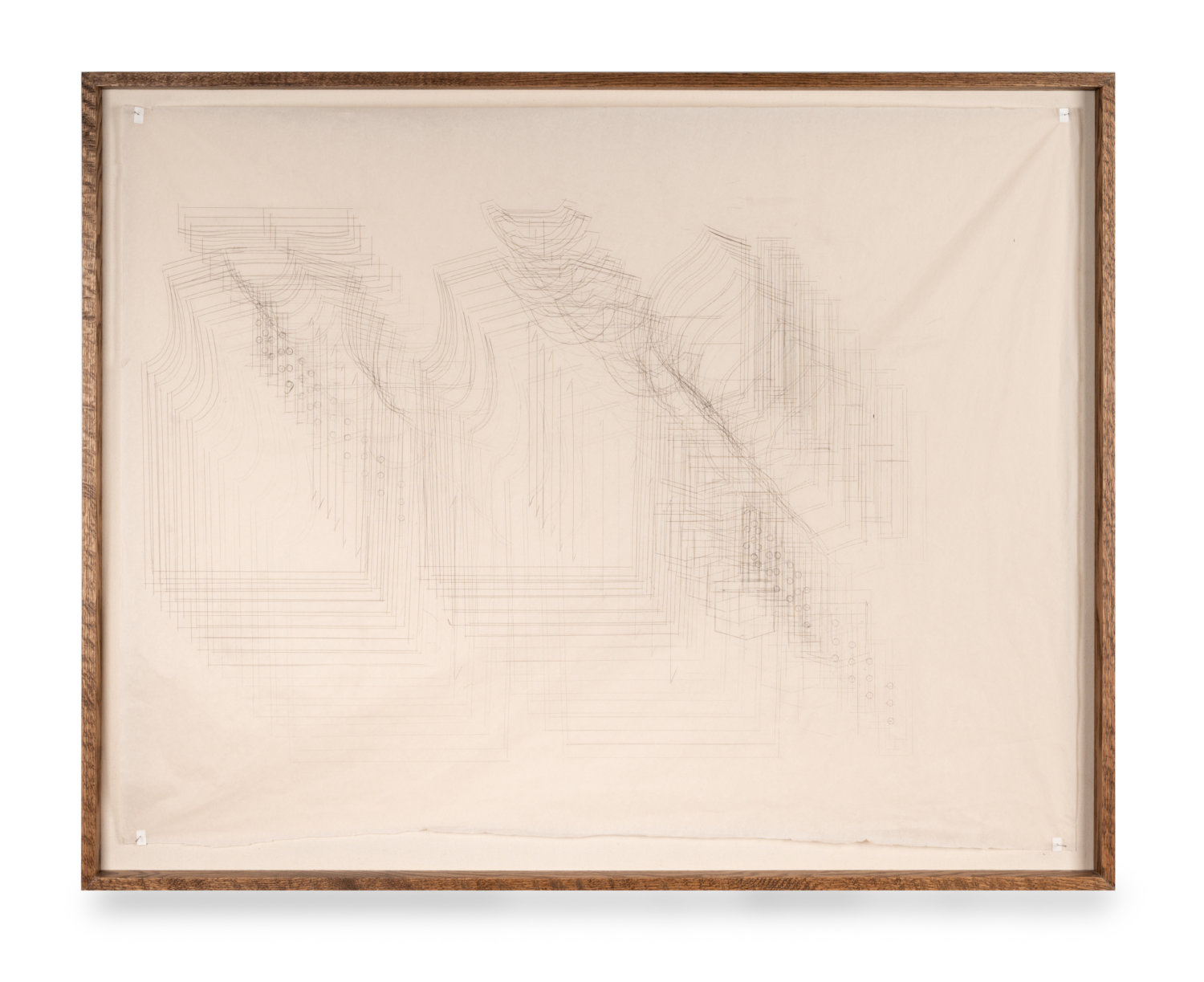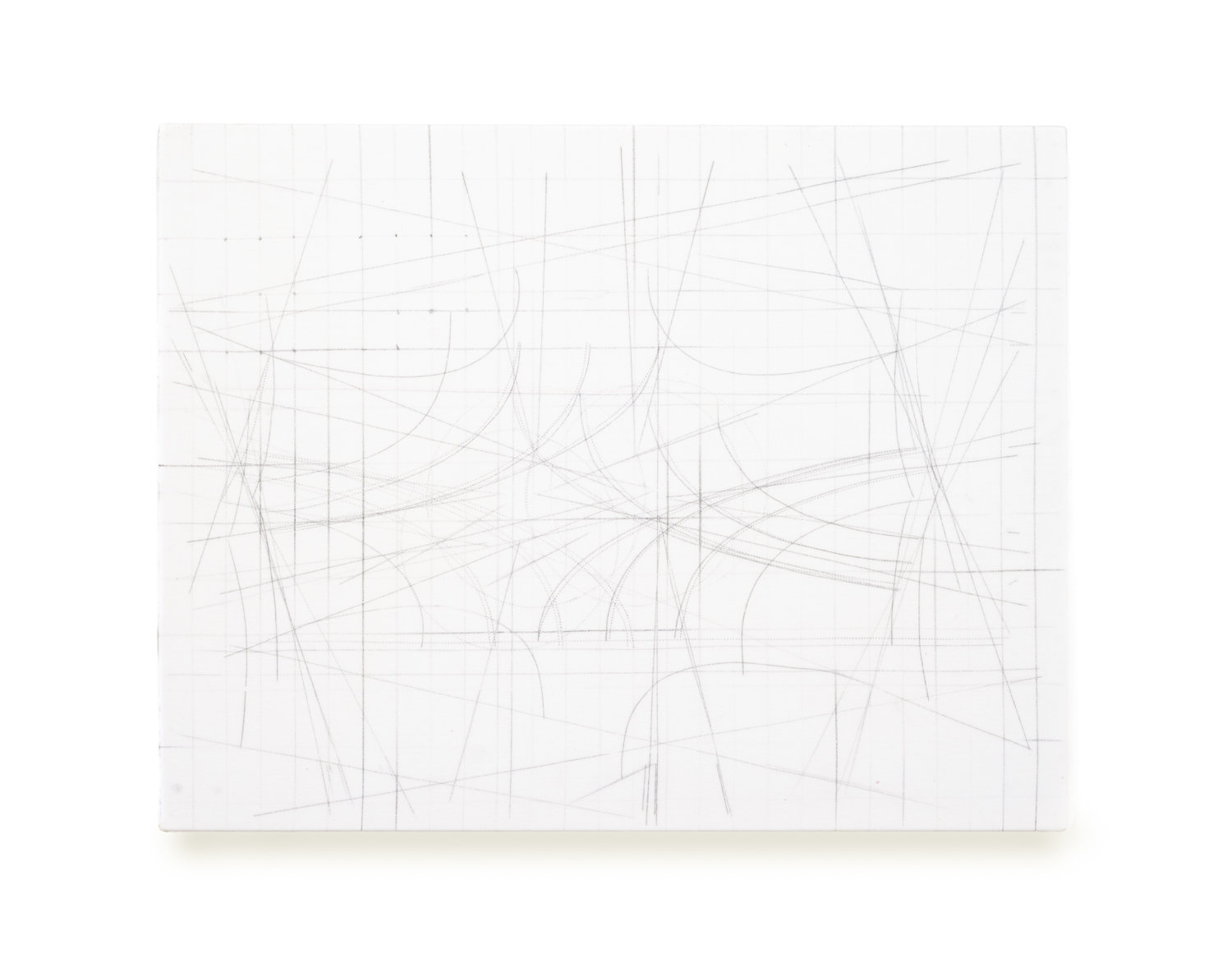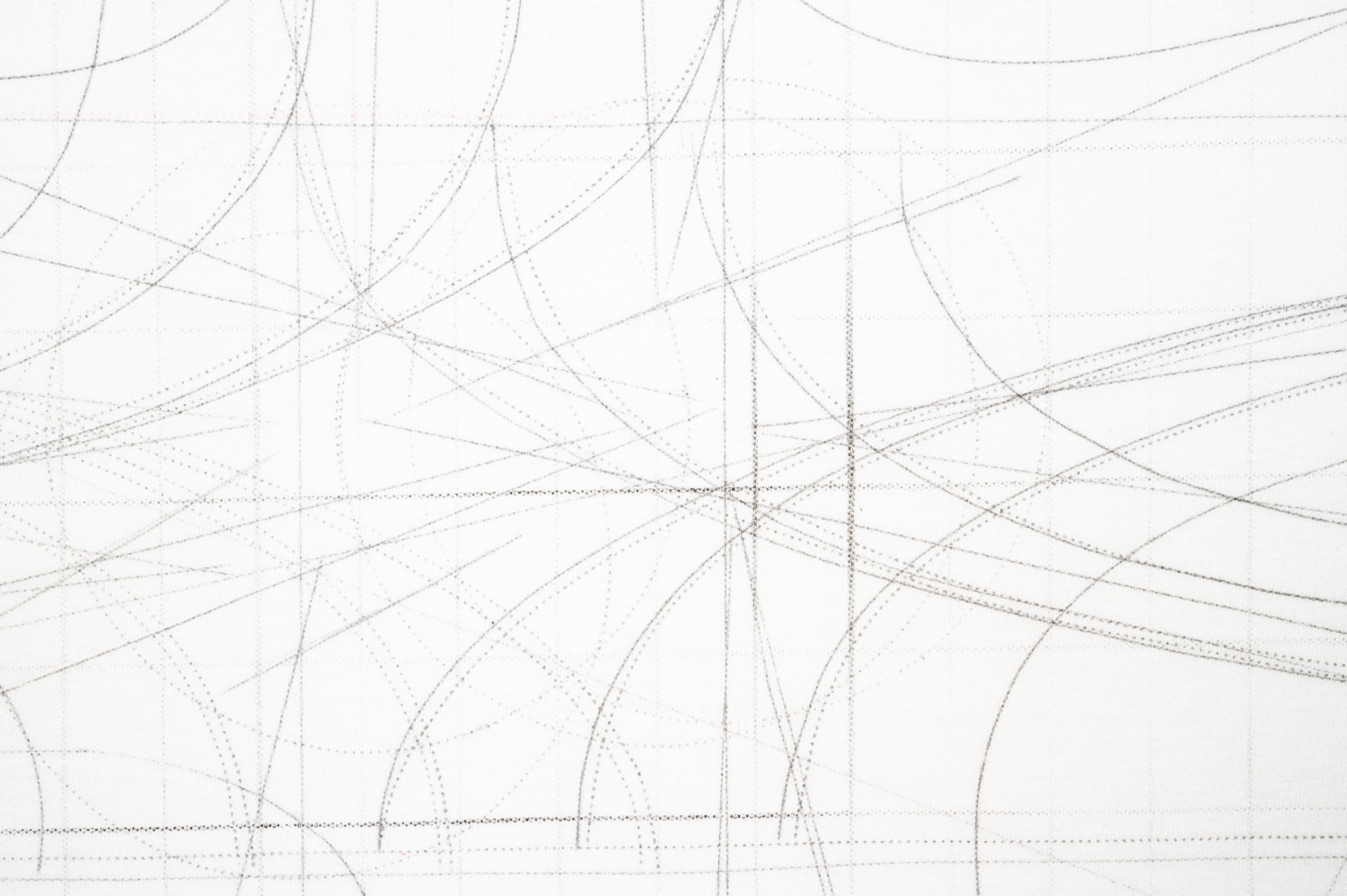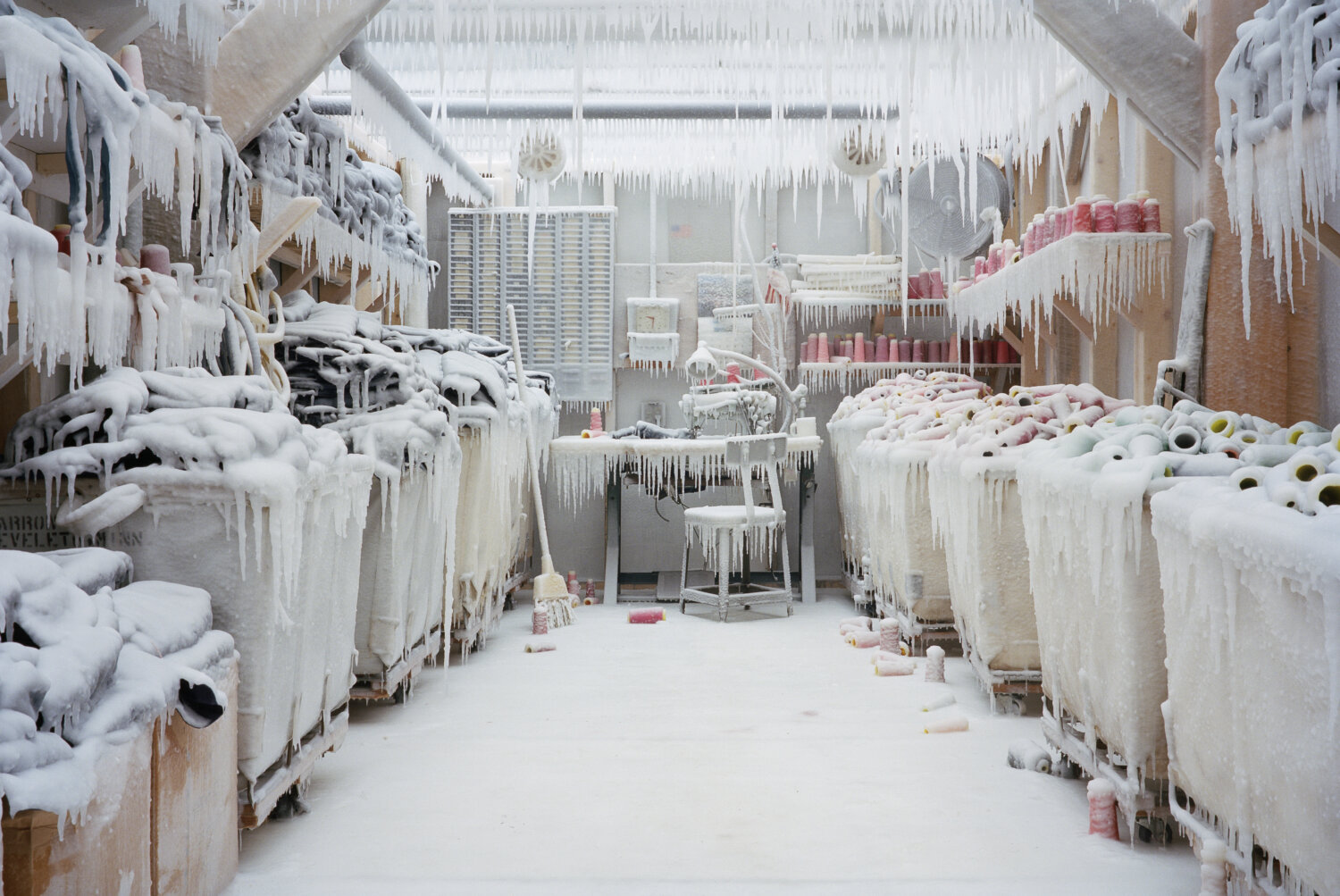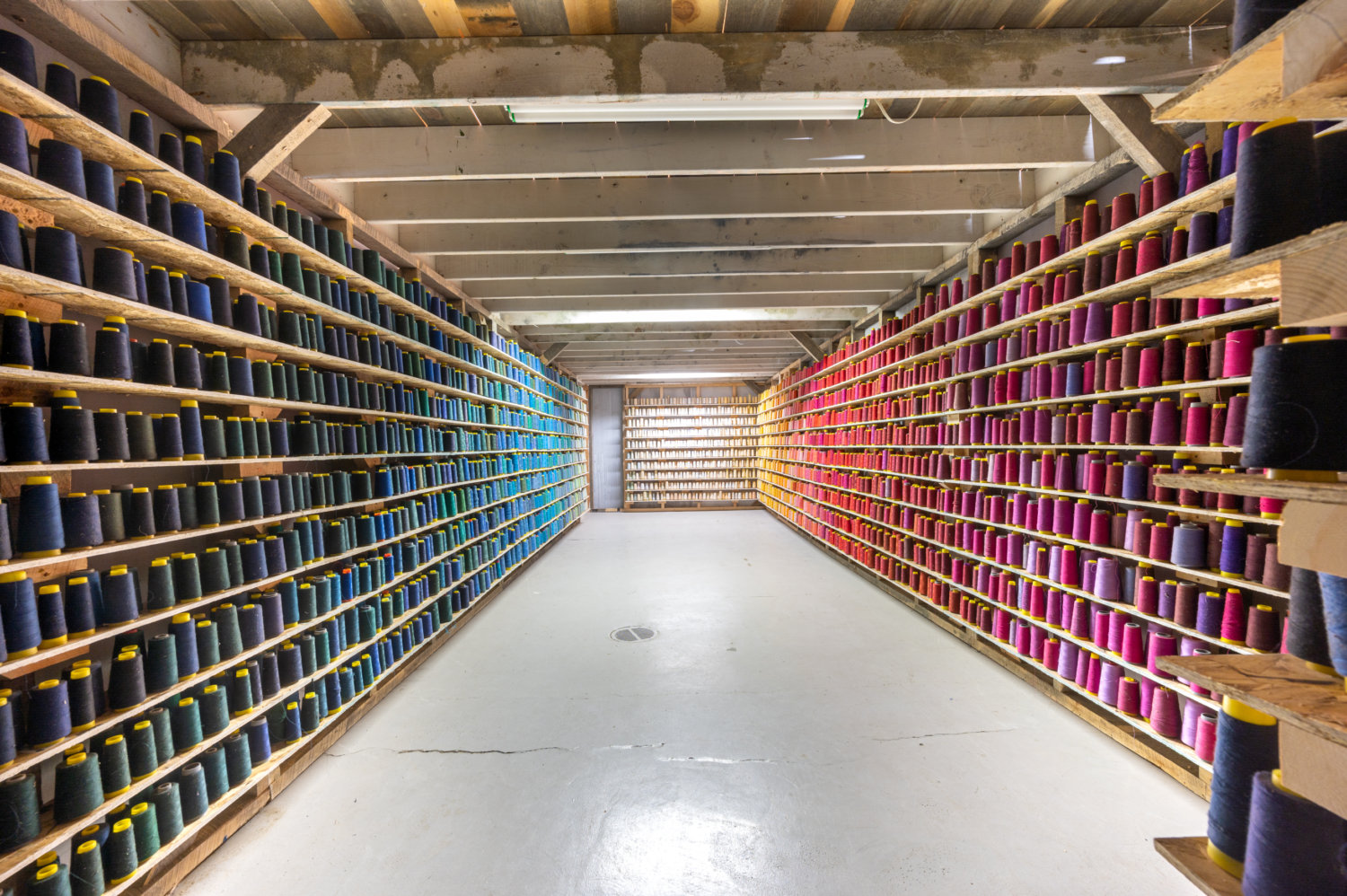The residue of labor, which usually remains unseen, is a summation of minute tasks of everyday repetition that are required for production and equate to the steady degradation of once enduring objects, equipment, architecture, and communities.” —Chris Larson
Presented by ENGAGE Projects, The Residue of Labor is an archival body of work that examines intensive labor through the conduit of an abandoned garment factory in rural Tennessee. As garment labor became predominantly outsourced in the late 90s, work was unceremoniously taken from rural communities and a history of human labor left behind. Through the curation of objects recovered from the factory and objects fabricated in his studio, Larson creates a narrative out of the remains of what was once a booming industrial operation. Individual personhood begins to surface from the details as Larson interrelates the residue of life in the factory.
In the fall of 2018 with an Artist Guggenheim Fellowship, Chris Larson moved his studio from St. Paul, Minnesota to the factory in Tennessee. Larson worked there for two years, collecting, archiving, and acting in performances that contemplate the ways the architecture and its forgotten objects have taken on the imprint of uncelebrated labor. In his new body of work, Larson engages the abstraction of labor in a place of heavy repetition. The exhibition features sculpture, video, drawing, painting, and photography all made from materials recovered from the factory.
Rooted in the relationship between architecture and individual, body and machine, Larson’s work approaches an intimacy with labor palpable in the absence of the human body. While American society has been largely desensitized from the concept of mass production, Larson’s work evidences the indivisibility of the hand from these artifacts, reanimating the mundanities of labor to highlight the individual beauty of objects that were made to be identity-less.
The Residue of Labor (Factory Speakers), 2022
wood, factory speakers, wire, sound device, recording of 12 factory sewing machines
84 x 84 x 48 in
Sounding like a busy hum from a distance, the recovered speaker system is assembled in a collection of noise to amplify the labor of the factory workers. The clicks and churns of individual sewing machines can be heard up close, a notable change from the country music that once played from the speakers throughout the Tennessee factory.
440 Found Unique Colors of Industrial Garment Thread, 2019
99 x 133 x 72 in
Part of the Recovered Object Series (2019-2022), Larson’s work 440 Unique Spools of Thread is an archive of color that documents the full range of colors in use by businesses like Burberry and Ralph Lauren during the period from 1950 to 1998. At the base of every spool is a sticker that denotes its color: Honey, Dream Girl, Greenette, Wireless Blue, Leghorn are a few examples. While the act of archiving the spools of thread individualizes them, the color gradation scheme unites them once again in a visual continuity indicative of the amount of production coming out of the factory. Each color was once part of a larger order that ran through production; the excess cast aside. This left behind singular spools of thread unwanted by the corporations for which the factory produced garments, creating the collection of 440 Unique Spools of Thread archived in Larson’s work.
Thread Color Identification Boards, 2019
77 x 143 x 1 in
Thread colors changed with the seasons as big brands like Burberry and Ralph Lauren determined what color clothing was on the market each year. Behind the scenes, factory workers hustled to keep up with the ever-evolving fast fashion, using wooden boards to identify spools of thread by name. In their haste to match the speed of production, titles were scrawled in letters over the previously effaced names, turning into a palimpsest bearing witness to the vast amount of production the factory was turning out; the previous name never fully erased and the excess spools never thrown away, the factory did not have time to acknowledge waste in order to keep up with demand. The thread name identification boards represent a reclaiming of mass commodified objects as they become distinct in their markings and titles. Immortalized in writing, names like American Beauty become art historical relics that capture the cultural moment of American society in the late 90s and early 2000s.
The Residue of Labor (Bathroom Doors), 2022
white pine, metal, factory bathroom doors
96 x 96 x 96 in
Embodying Larson’s motif of rotation, these recovered bathroom doors are arranged in a gear-like fashion suggesting cyclical rotation and heavy repetition. Bathroom Doors represents the few moments of privacy and respite from work the factory laborers may have gotten during a day. Under close inspection, the clasps on the doors are worn from use. Peeling paint colors were not a symbol of beautification, but rather of necessity as those were the only colors on hand. While over 50 years of labor took place in the factory, the architecture evidences that only the most rudimentary of needs were met in order for the factory to function.
The Residue of Labor (Sewing Machine Tabletops), 2019
87 x 137 x 2 in
Specific points of dilapidation evidence the years of labor and physical relationships that the workers formed with the objects around them. Sewing Machine Tabletops evidences the reciprocal impressions of the machine on the body and the body on the machine, a quintessential embodiment of the residue of labor. Increasingly evident as the viewer spends time with the piece, the geometric voids in the tabletops signify more than just the functional placement of the sewing machines; the tabletops are left undisguised by their function and fully exposed to the possibility of being seen for the individual stories they bare.
74 Canvas Covered Boards, 2023
74 found factory canvas-covered sewing machine extension boards
144 x 276 in
6 Miles of Neon Yellow Thread, 2018-2019
edition of 5 + 2 AP
10.5 x 15.75 in & 14 x 21 in
Factory Performance Series, 2018-2019
edition of 5 + 2 AP
9,000 Spools of Thread on the Factory Floor, 2018-2019
edition of 5 + 2 AP
14 x 21 in
6 Miles of Southern Red Thread, 2018-2019
edition of 5 + 2 AP
10.5 x 15.75 in & 14 x 21 in
In the Factory Performance Series (2018-2019), thread from the factory fastens machine to architecture, bringing the reciprocal impressions of anthropogenic spaces and the bodies that inhabit them to the foreground. The continuous lines of thread become a network that communicates between the intangible presence of the working body and the structure which surrounds it. While the installations stand alone as works of art, the series reaches beyond installation; Larson honors the factory’s forgotten past through the performance to no audience, sometimes walking 12 miles of thread to complete a single installation. Larson’s parallel exertion brings forth questions of the valuation of labor and class, bearing witness to the immense amount of work that once took place within the factory walls.
Untitled, 2023
twenty miles of found pink #3 industrial garment thread wrapped around building support poles, 2 found industrial sewing machines, packing crates
dimensions variable
Untitled, 2023
twenty miles of found pink #3 industrial garment thread wrapped around building support poles, 2 found industrial sewing machines, packing crates
dimensions variable
Sewing Machine Portraits, 2019
Run time: 30:08 minutes
edition of 5 + 2 AP
Entitled 30 Sewing Machine Portraits (2019), this video functions as an individuation of each of the machines, recognizing their stories as characteristically discernible from each other. With some factory careers lasting as long as 50 years, the sewing machines became extensions of the body as worker and machine familiarized themselves with each other over time. The hyper close-ups highlight areas of dilapidation from human touch and heavy repetition.
Factory Rotation #2, 2023
hand-sanded archival inkjet digital print in artist made aluminum frame
44 x 57 x 1.25 in
Factory Rotation #3, 2023
hand-sanded archival inkjet digital print in artist made aluminum frame
44 x 57 x 1.25 in
Factory Rotation #3 (detail), 2023
hand-sanded archival inkjet digital print in artist made aluminum frame
44 x 57 x 1.25 in
Timecards #11, 2021
found factory time cards, Ralph Lauren industrial garment thread
72 x 72 x 3 1/4 in
Timecards, 2021
found factory time cards, Ralph Lauren industrial garment thread
36 x 36 x 3 in
24 x 24 x 3 1/4 in
72 x 72 x 3 1/4 in
Timecards #11 (detail), 2021
found factory time cards, Ralph Lauren industrial garment thread
72 x 72 x 3 1/4 in
The Timecards Series (2020-2022) replicates the residue of labor by creating depth through erasure. A motif of his practice, Larson uses rotary tools to emulate the effacing of history by removing material from the surface of layered factory time cards. Despite their mechanical inceptions, the indisputable presence of the human impression on these works starkly contrasts the connotations of mass production they carry.
American Beauty, 2021
found American Beauty Ralph Lauren industrial garment thread on canvas
48 x 96 x 3.5 in
Greenette, 2021
Greenette, Copen Blue, Black, Easter Purple, Cherry Bloss, Campus Gold, Peacock, Breezy Blue, Atom Red, and Spruce found Ralph Lauren industrial garment thread on canvas
48 x 96 x 3.5 in
Matelot Blue, 2021
found Matelot Ralph Lauren industrial garment thread on canvas
48 x 96 x 3.5 in
Summer Beige and Tan, 2020
found Summer Beige and Tan Ralph Lauren industrial garment thread on found white Ralph Lauren Polo
37 x 48 x 3 1/2 in
Using industrial garment thread recovered from the abandoned factory, Larson’s Thread Works Series (2020-22) reimagines the product of the thread from functional garments to paintings, creating beauty out of discarded materials. Larson began by building a foot treadle-operated machine to wrap canvases vertically in thread with the precision of high technology and the randomness of human-generated frequency. Each individual piece is titled after the color code found on the bottom of a spool of thread.
Found Industrial Sewing Machine Wrapped with 7 Miles of Lavender Industrial Garment Thread, 2023
30″ x 30″ x 48″
26 Timecard Holders with Found Sphere Blue Industrial Garment Thread, 2023
circular steel threadwrapping
80″ x 44″ x 44″
Pattern Drawing #3, 2020
pattern drawing on found tissue paper in artist’s frame
48 x 39 x 3 in
Pattern Drawing #1, 2020
pattern drawing on found tissue paper in artist’s frame
36 x 48 x 3 in
Shirt Pattern #1 on Navy, 2020
found tailor’s chalk on found navy Ralph Lauren Polo
37.25 x 48 x 3.25 in
Pattern Drawing #2, 2020
pattern drawing on found tissue paper in artist’s frame
42 x 53 x 3 in
Shirt Pattern #3, 2020
found tailor’s chalk on found white Ralph Lauren Polo
22 x 29 x 3 in
Shirt Pattern #3 (detail), 2020
found tailor’s chalk on found white Ralph Lauren Polo
22 x 29 x 3 in
Shirt Pattern #2 on Navy, 2020
found tailor’s chalk on found navy Ralph Lauren Polo
37.25 x 48 x 3.25 in
A deconstruction of how to make high-end garments like the Polo shirts produced at the factory, Larson highlights the pattern drawings as an abstraction of labor. The patterns relate the body to architecture through the aesthetic implication of their blueprint-like drawings, showing how the repetitive labor of tracing flat shapes can develop into a three-dimensional object of value.
The Stillness of Labor (video stills), 2022
Run time: 9 minutes
edition of 5 + 2 AP
In the video Stillness of Labor (2022), Larson replicates 12 full-scale rooms using objects extracted from the garment factory to mirror the environment of the laborers. The always-developing workspace, and its unique customization to each worker creates a palpable absence of the human body that is evident in its recreation.
Thread Room, 2022
96 x 120 x 288 in
Thread Room, named for its 7,000 spools of thread sprawling from ceiling to floor of its four walls, acts as foil to its own makeshift structure; contrasting its unsuspecting exterior, the inside of the basement replica emanates with color. Designed to imitate the filtering of light into the underground factory, Thread Room features cool colors on the shaded side, warm colors on the side opposite the doorway, and color undulations to represent the fluorescent lights hanging above. The narrow shelving rises just above the spools of thread, mimicking the low-hanging ceilings that constrained factory workers during the years of production. Thread Room is pictured near the beginning of Larson’s film The Stillness of Labor as a representation of the mass of materials abandoned after labor was outsourced. In this way, Thread Room recognizes 50 years of unseen labor that occurred just below the surface of a Tennessee community.
Larson credits the McKnight Foundation, Grant-in-Aid, the University of Minnesota, the Talle Award, and the Guggenheim Foundation in their financial support of this site-specific study.



